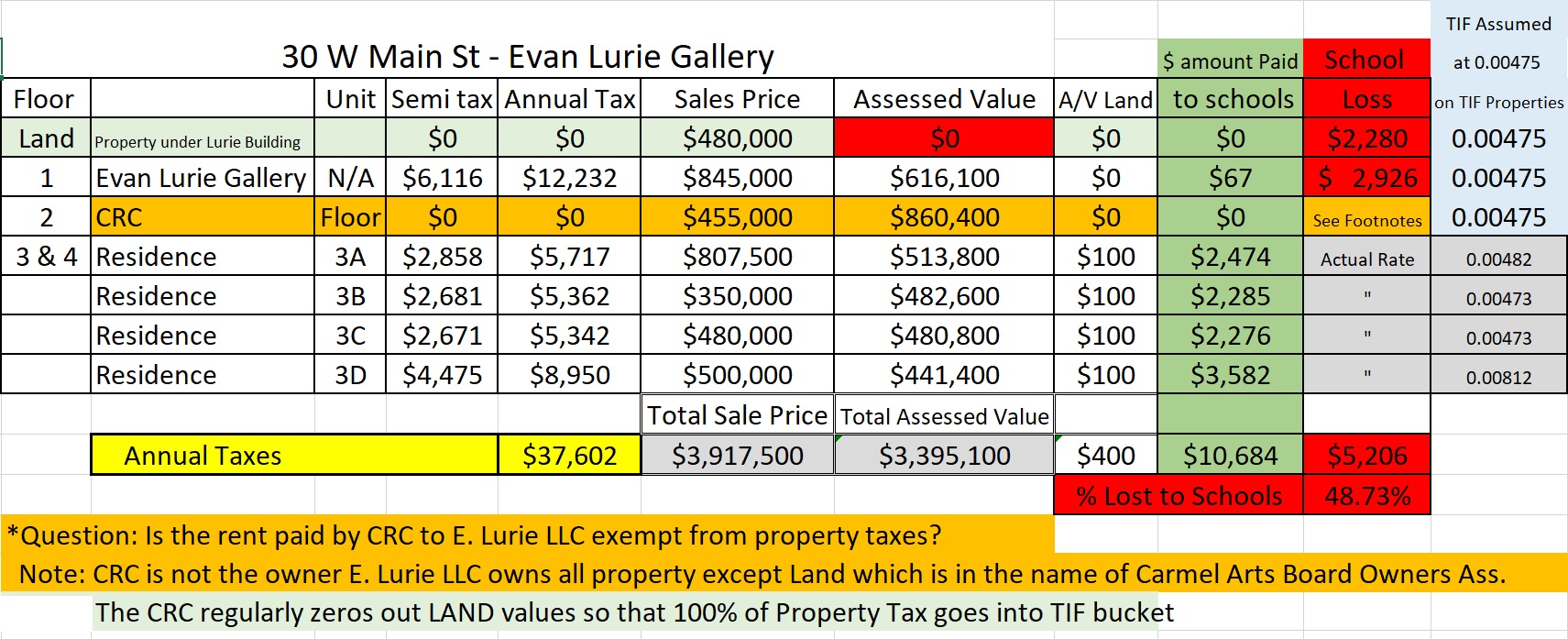Evan Lurie Gallery incites fury, with reason
November 15, 2007
Filed under PERSPECTIVES
Yet another question surrounding the allocation of Carmel taxpayer dollars has been raised. This time, the case involves the $4.1 million Evan Lurie Gallery of Fine Art located on Main Street. Carmel has invested $1.2 million and backed the developer’s $2.9 million loan, according to an Indianapolis Star article.
Evan Lurie, a gallery owner previously located in Miami and a former Hollywood actor and stunt man, opened last month the new gallery with his named etched prominently on the building. According to the Star, he contributed $1.3 million of his own funds to the project while the city secured the rest of the money.
Attracting a high-end gallery in hopes of increasing Carmel’s arts recognition is painfully optimistic and, for everyone’s sakes, hopefully not misled. The contribution of public taxpayer money to a private business, however, sends red flags flaring.
The city plans to recuperate its investment by selling condos in the two upper stories of the Lurie building, the star attraction of the Arts and Design District. The developer of the site projects nearly $3 million in earnings from the sale of these four condos, and the city hopes to break even with this account. The Star said that if the developer defaults on its $2.9 million loan, the city is to pick up the tab. So far, one condo has sold.
The city should have offered tax breaks, care in traffic considerations or zoning for parking as incentives, but it dirtied its hands in a private deal.
There are a couple of concessions in those numbers which should be pointed out. According to the Star, Mayor Jim Brainard said that some of the city’s contribution came from business taxes and that the city also projects the building will generate some $75,000 in property taxes.
When I first heard about the Arts and Design District concept, I supported infusing some new life into the otherwise economically lacking area. The idea, however, has warped into a monstrosity that doesn’t know when to quit. The opening of new stores frequently results in the demolition or closing of old stores, and the city is leveraged up to its nose in District projects.
Not only does Carmel have a large stake in the success of this private business, it also keeps Lurie on its payroll. The city employs Lurie — a consultant, technically speaking — to attract other out-of-state gallery owners to move their businesses to the District. Since 2005, Carmel has paid Lurie more than $100,000 in consulting fees, says the Star. This money covers living expenses for Lurie, who moved his family here.
The opening of this gallery is yet another example of Carmel’s overactive checkbook. To encourage business to open here and to beautify within its boundaries is part of the local government’s charge, and I understand that it takes money and a carefully refined effort. The lengths to which the current administration has gone, however, far exceed its rightful responsibilities and has resulted in unnecessarily huge investments by taxpayers.
Brainard, who has received the brunt of the criticism especially with the recent election, and the Carmel Redevelopment Commission are gambling with millions of dollars here. The return of the city’s investment hinges on three currently unknown individuals who will buy condos retailing for more than $665,000. Now I haven’t personally walked through these residences, but I’m betting that the high price tag will deter most potential buyers, especially when neighboring homes cost less than half that.
Carmel is also saturated with art galleries, especially in the District. The Children’s Art Gallery already holds the Guinness world record for being the smallest one; perhaps the District aims to have the largest number of art galleries in a quarter-mile radius. Nonetheless, the District has not yet achieved the eclectic, artsy vibe it desires. Obviously the idea hasn’t fully taken off, and the enumeration of these galleries fools the District into thinking it has. We are still in the Midwest, and let’s be frank, this is still Indiana – far from a sprawling, urban center.
As a future taxpayer, I hope the city’s money equips the fire department and promotes high education – I would even spring for repaving roads, but not sweeping the doormats of businesses. The Evan Lurie Gallery, even in all its architectural splendor, is unfortunately an example of just that. Hopefully, the city isn’t shooting for the moon and landing in a ditch because with this amount of money involved, the repercussions could echo for years.
Jaclyn Chen is editor in chief of the HiLite. Contact her at jchen@hilite.org.
We have outstanding students and people in Carmel! This is an example of the journalistic prowess of just one of them.
Nice Job, Jaclyn Chen!
3/29/2019 observations. The $675,000 unit was optimistic at best The $2.9M that was the cities breakeven point on dollars invested was only $2.14M or 74% effective and the planned annual tax collections of $75K/annually is actually $37.6K/year, about 50% of Brainard’s optimistic projection.

